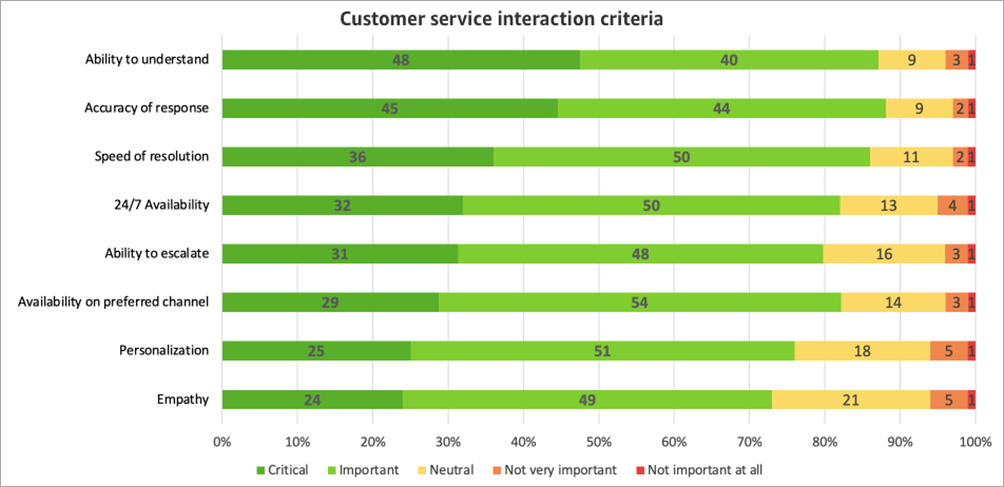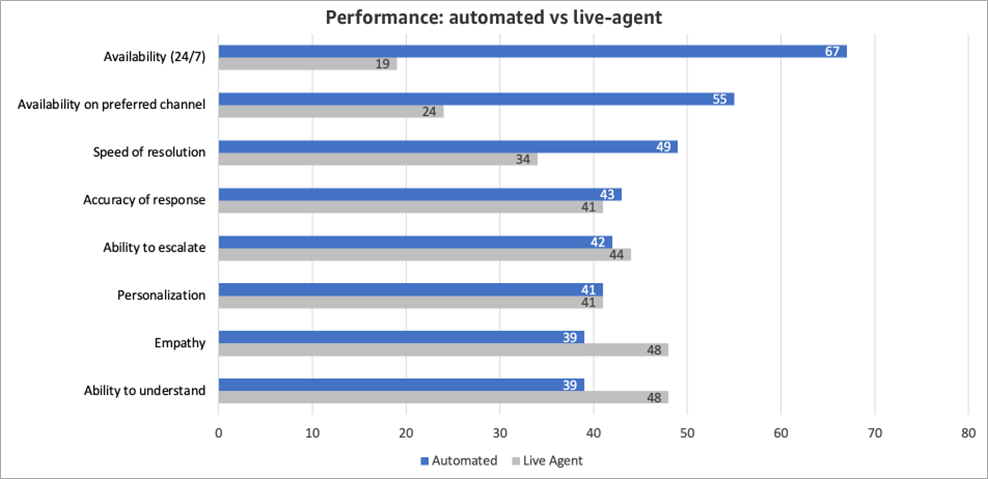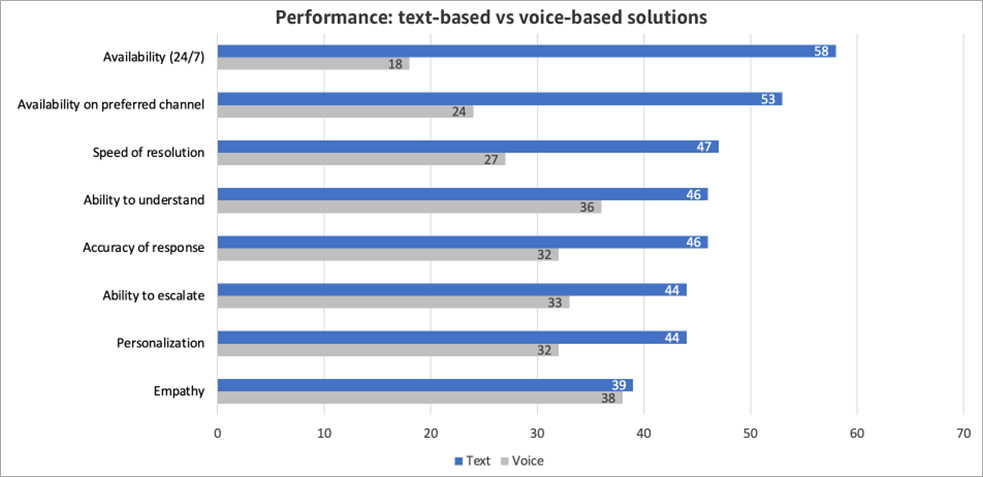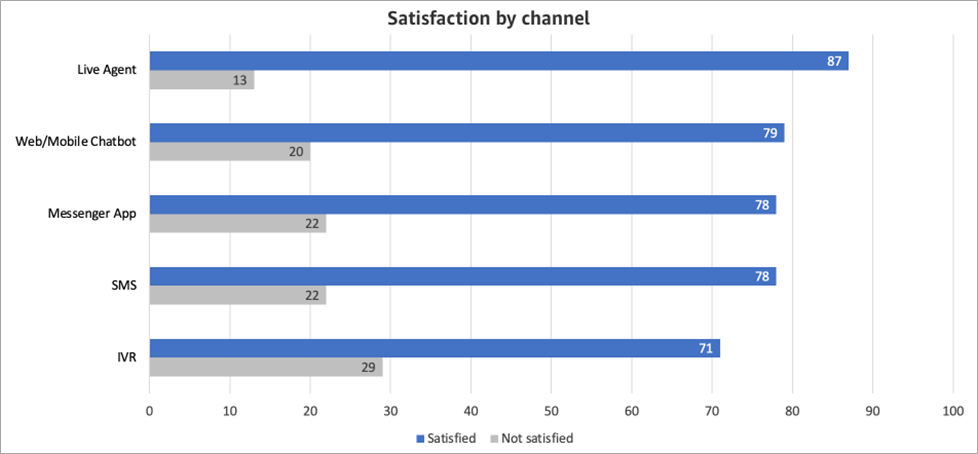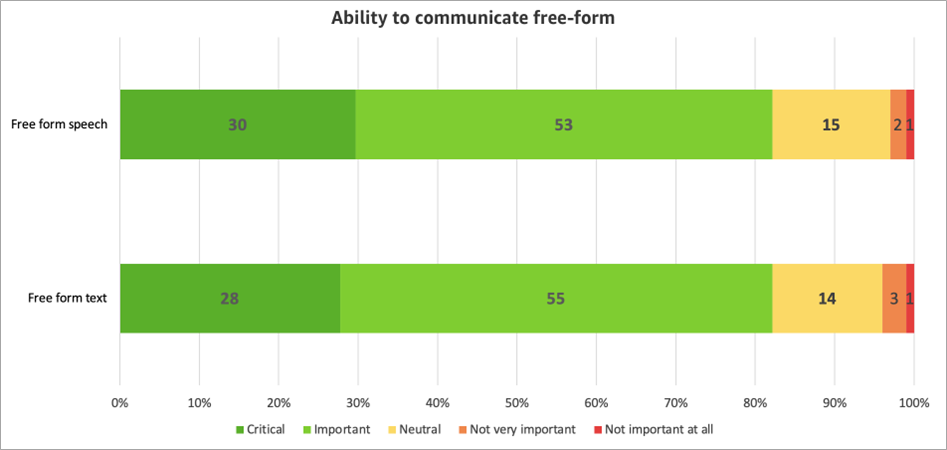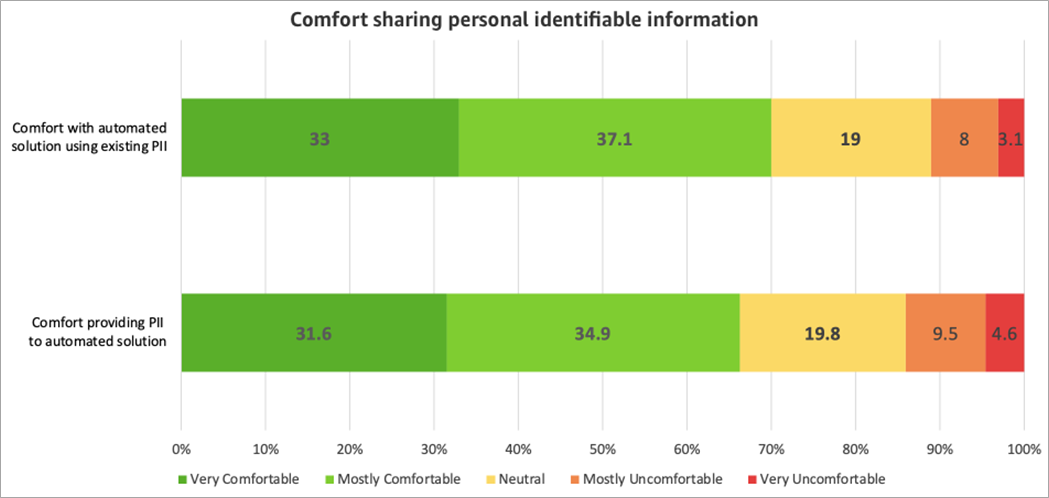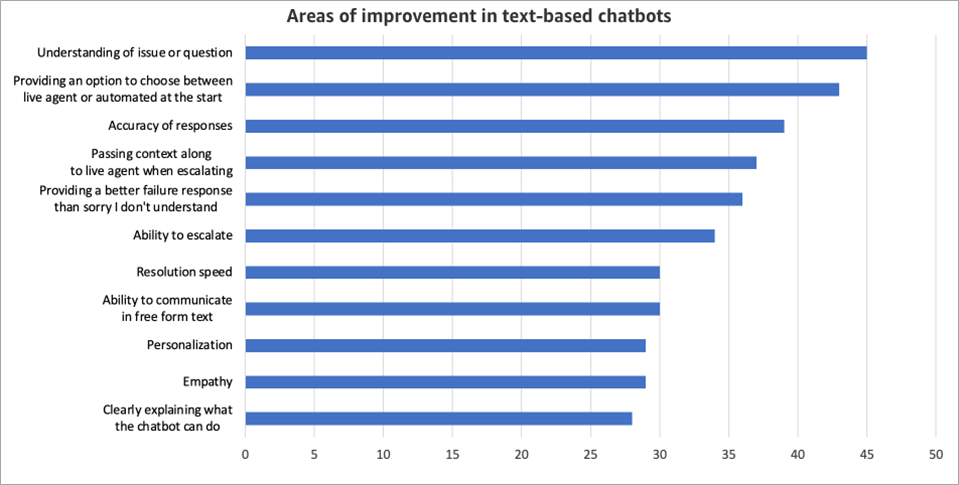AWS Partner Network (APN) Blog
What Do Consumers Really Think of Automated Customer Service?
By Arte Merritt, Conversational AI Global Segment Lead – AWS
Conversational AI solutions, like chatbots and interactive voice response systems (IVR), are a key component of enterprises’ customer service strategy. While reducing costs and increasing containment are often cited as reasons to implement automated solutions, it really comes down to providing a better customer experience—being available 24/7 on channels users prefer to interact.
But what do customers really think of these automated solutions?
Amazon Web Services (AWS) recently ran a survey, through ESG, on consumers’ opinions of automated customer service solutions like chatbots and IVRs. Below are the insights.

Customer Service is Key
Providing high quality customer service is important—it can be the difference between repeat customers or lost ones. Based on the survey results, 90% of respondents are more likely to make another purchase from a business after a positive customer experience.
On top of that, 70% of respondents are willing to pay more for a product if a company provides exceptional customer service. At the same time, 64% would switch to a competitor after just one bad customer experience.
Consumers have choice and they are looking for responsive customer service. From the survey, 87% of respondents expect an immediate response when contacting a company.
Automated solutions, when done well, can provide a better customer experience—quickly, immediately, and on the consumers preferred channel, without having to interact with a human agent.
This is what consumers want; 84% of respondents are more likely to spend more with brands that allow them to choose their preferred channel. Meanwhile, 74% of respondents are more likely to spend more with brands that allow them to avoid contacting a live agent.
Automated Customer Service Across Use Cases
Consumers were surveyed on their preference for interacting with an automated chatbot or IVR solution versus a live agent, across a variety of common use cases.
Consumer preference for Conversational AI was strongest for common use cases relating to information requests, frequently asked questions (FAQs), and basic transactions like signing up for, updating, or cancelling an account. For example, the preference for using an automated solution to check an order status was 3.4 times greater than interacting with a live agent (67% vs. 20%). The preference for automated solutions for FAQs was 2.4 times greater than a live agent (61% vs. 25%).
Even for less traditional customer service use cases, like signing up for an account or booking an appointment, automated solutions were more strongly preferred over live agents—2.1 times and 1.7 times, respectively.
While not as strong a preference, respondents still preferred automated solutions for filing complaints and requesting refunds (46% to 43% for both).
Where respondents preferred talking to a live agent was for reporting fraud or identity theft. The preference was approximately 1.3 times greater than interacting with a live agent (52% vs. 39%). It would be interesting to dive deeper into the reasons why—if, perhaps, the seriousness of the issue or the need for a more human approach were factors.
Accuracy and Understanding are the Most Important Criteria
When it comes to customer service interactions, respondents care most about the ability to understand their issue and respond accurately, regardless of automated solution or live agent. Based on the survey, 89% feel the accuracy of the response is important, and 88% feel the ability to understand is important.
This is not to say other criteria are not important—multiple criteria are viewed as important by more than 80%. These two, however, are viewed most critically important at 45% and 48%, respectively.
Speed of resolution, availability on a preferred channel, and 24/7 availability are all important to consumers at 86%, 83%, and 82%, respectively.
We also noted that 79% of respondents view the ability to escalate as important. While automated solutions can help reduce escalations, it’s important to provide a means to escalate. One could optimize for 100% containment by never escalating a customer, but that would be at the detriment of the customer experience.
Automated Solutions Outperform Live Agents on Speed and Availability
As mentioned earlier, availability and speed of resolution are important criteria in customer service interactions. Automated solutions outperform live agents significantly when it comes to 24/7 availability, availability on a preferred channel, and speed of resolution at 3.5 times, 2.3 times, and 1.4 times, respectively.
When it comes to the two criteria most important to respondents (the ability to understand and accuracy of the response), the accuracy of response is about the same, with a slight edge to automated solutions (43% to 41%). For the ability to understand, however, respondents tend to view live agent performance as 1.2 times better (48% to 39%).
Text-Based Channels are Preferred Over Voice-Based IVR
Based on the survey, 73% of respondents prefer text-based channels over voice IVR. Diving deeper, 33% prefer web or mobile chatbots, 21% prefer SMS chatbots, and 19% prefer messenger app chatbots like Facebook Messenger or WhatsApp, for example. This information may be helpful in deciding which channel to automate first.
Text-Based Chatbots Outperform Voice-Based IVR
When it comes to the criteria important to respondents, text-based chatbots outperform voice-based IVR across the board. The strongest performance differences are in 24/7 availability, availability on preferred channels, and the speed of resolution at 3.2 times, 2.2 times, and 1.7 times, respectively.
For the two most important criteria (the ability to understand the request and accuracy of the response), text-based chatbots outperform voice-based IVR by 30% and 40%, respectively.
Satisfaction Tends to be Higher with Live Agents
Although respondents tend to prefer automated solutions for most common use cases, their satisfaction tends to be higher with live agents. Respondents’ satisfaction for live agents is 6.7x greater than their dissatisfaction (87% to 13%).
This is worth diving deeper into. It may be related to respondents’ feeling that live agents outperform automated solutions when it comes to the ability to understand the request and empathy, as seen in an earlier chart above.
Customer satisfaction is important and is not just about understanding a user and responding appropriately. It’s more about responding in a way that satisfies the user. It all goes back to improving the customer experience, and this is an area of opportunity to improve automated solutions.
Free-Form Conversation is Important
When it comes to automated solutions, enabling customers to speak or write in free-form is key. From the survey, 83% of respondents felt it was important to be able to speak freely in a voice-based solution or write freely in a text-based solution.
Conversation matters, too. We are talking about Conversational AI solutions, after all, and “conversation” is in the description. However, some solutions that enterprises deploy are more button or menu-based and do not allow for free-form communication.
There is value in allowing free-form communication. It’s not only what consumers want, but it allows for deeper insights and learnings. In a free-form experience, users will tell you what they want, and they’ll also tell you what they think of the response afterwards. They are providing a wealth information you can use to provide better customer service and improve the underlying products and services.
In a way, they are helping drive the product roadmap of the experience. This is why it’s important to look at the analytics to see how customers are interacting with the automated solution.
Consumers are OK Sharing Information
Leveraging context and personalization can dramatically improve the customer experience of an automated solution. The more information you know about the user, the less you have to ask. For example, in a typical experience calling an airline, the IVR greets you by name and asks if you are calling about your upcoming flight to a specific location. It knows who you are and what you are most likely calling about. Flows can be streamlined and issues can be resolved faster.
The caveat to this is collecting and using personal information.
As part of the survey, respondents were asked if they are comfortable sharing personally identifiable information (PII) and having the automated solution make use of their personal information. It turns out they are.
On average, 70% of respondents are comfortable with automated solutions making use of PII already known about them. In addition, 67% are comfortable providing PII during an interaction.
Automated Solutions Have Room for Improvement
Even though consumers tend to prefer automated solutions for common use cases, there is room for improvement, as the charts earlier have shown.
Two of the main areas of improvement, for both text-based and voice-based solutions, are the two most important criteria—the ability to understand the request and accuracy of the response. The ability to understand is the top area of improvement for both text-base and voice-based solutions, with 45% and 46% of respondents citing them, respectively.
Another area of improvement that stood out is providing the ability for customers to choose between an automated solution or live agent at the start. For text-based solutions, 43% felt this was an area of improvement. For voice-based solutions, 39% felt it was an area to improve.
Summary and Next Steps
Conversational AI solutions have come a long way from basic FAQ experiences. We are now seeing more advanced solutions like multi-modal interfaces wherein a voice IVR guides a user through a web or mobile experience, or chatbots that incorporate additional AI for image recognition or document processing.
While we see strong positive signals of consumer interest in automated solutions, there are still areas for improvement.
Building high quality, highly effective conversational AI is an iterative process that benefits from domain expertise. AWS Conversational AI Partners are can help by providing domain expertise, augmenting resources, and speeding up time to market.


